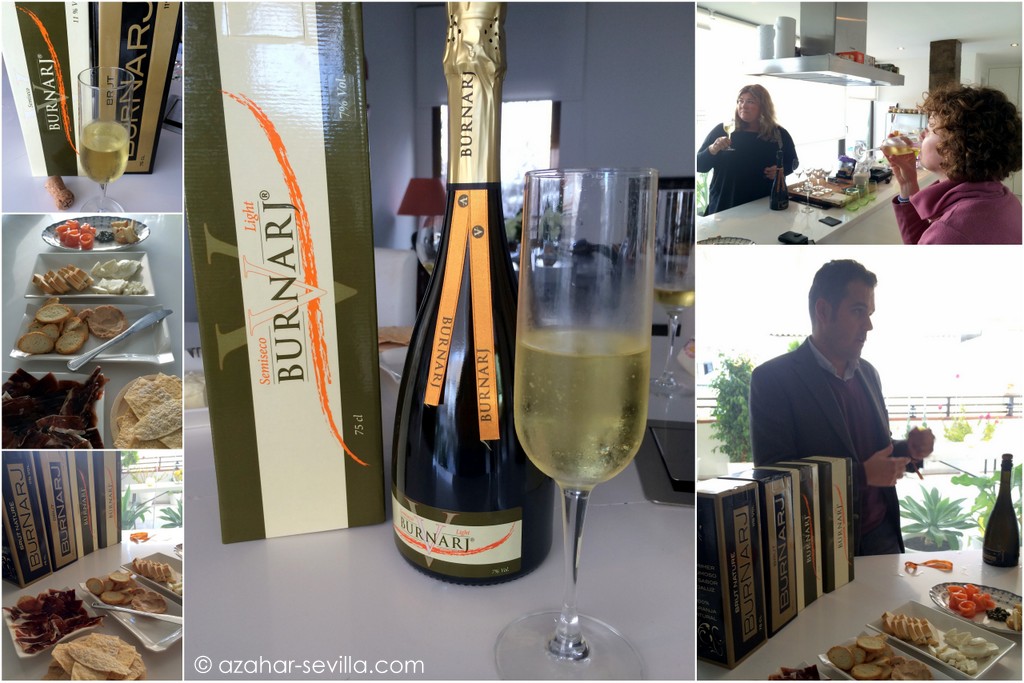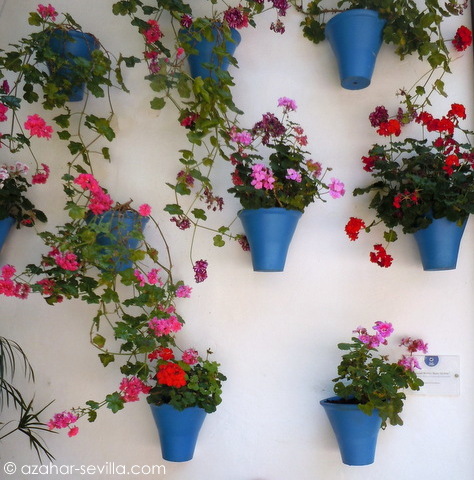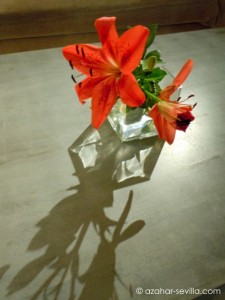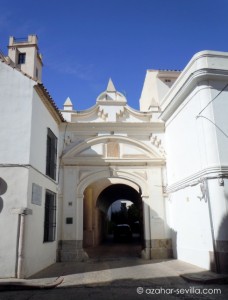[click on image to enlarge]
I was treated to a private wine tasting yesterday, along with friends Fiona @Seville_Writer and Amelia @TravelCuisine1, arranged for us by BurNarj @Burnarj, a young family-run winery in Palma del Rio, Córdoba. BurNarj – a pormanteau of “burbujas” (bubbles) and “naranja” (orange) – is the world’s first and only sparkling orange wine made from 100% orange juice. All other orange wines presently on the market are grape wines that have been infused with orange juice, zest, etc. BurNarj wines are made using the traditional méthode champenoise which, aside from champagne (obvs), is also used for making Spanish cava. There are four wines in the Burnarj range: Brut Nature (dry 11% alc), Brut (slightly sweet 11% alc), Semi-Seco (semi-sweet 11€ alc) and a Semi-Seco light (7% alc). It is recommended to drink these wines well-chilled between 1º – 3º C.
BurNarj general director Alfonso Diéguez arrived at Travel & Cuisine headquarters with a cooler full of wines and a lovely selection of snacks. We started off tasting the bone dry Brut Nature, which paired very well with the smoked salmon and jamón Ibérico (Alfonso also recommends it with Rio Frío caviar from the same region), and which ended up being everybody’s favourite. I found the Brut to be a “neither here nor there” wine and was surprised to find I liked the Semi-Seco light second best out of the four. At 7% alcohol it would be a perfect brunch wine, like a ready-made mimosa. Also great for picnics, come to think of it.
Alfonso talked us through the process and explained the different characteristics of each wine with obvious passion. I was surprised to learn that it takes 5 kilos of oranges (2 litres of fresh juice) to make just one bottle of wine. It was also interesting to find out more about the origins of the company and the labour-intensive méthode champenoise. Just two years old, the winery is already selling well in Japan, Poland, Mexico and the UK, as well as at home in Spain. At 11.90€ – 13-50€ retail this would probably be a special occasion wine for most people, but I do recommend giving these wines a try, especially the Brut Nature and the light Semi-Seco.
For more information and to visit the BurNarj online store…
BurNarj Website
Pol. Ind. El Garrotal, Calle E, parcela 5
Palma del Río, Córdoba
Tel. 957 644 059 / 672 289 105

 Córdoba is undoubtedly one of the most important historic cities in Europe, with a list of world-class monuments topped by the splendid Mezquita. But it also has quieter, less obvious charms. Among these are the famous Córdoban patios and courtyards (which even have their own festival), decked with flowers, often in the distinctive dark blue flower pots that can be seen all over the cities. Of course, patios and courtyards are not unique to Córdoba, being a typical architectural form all around the Mediterranean, but here they have been developed more than almost anywhere else, and have become almost a local art-form.
Córdoba is undoubtedly one of the most important historic cities in Europe, with a list of world-class monuments topped by the splendid Mezquita. But it also has quieter, less obvious charms. Among these are the famous Córdoban patios and courtyards (which even have their own festival), decked with flowers, often in the distinctive dark blue flower pots that can be seen all over the cities. Of course, patios and courtyards are not unique to Córdoba, being a typical architectural form all around the Mediterranean, but here they have been developed more than almost anywhere else, and have become almost a local art-form.



